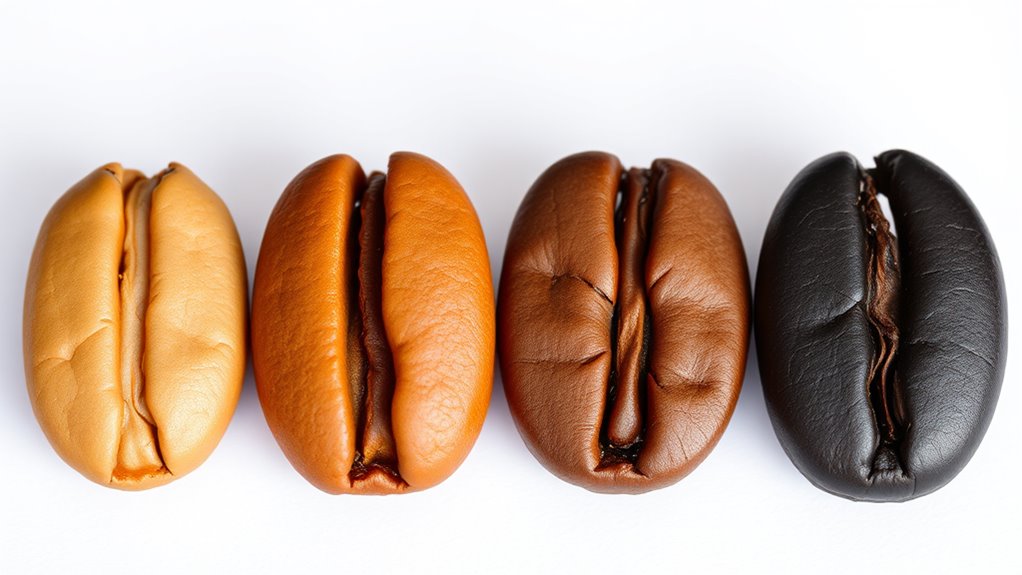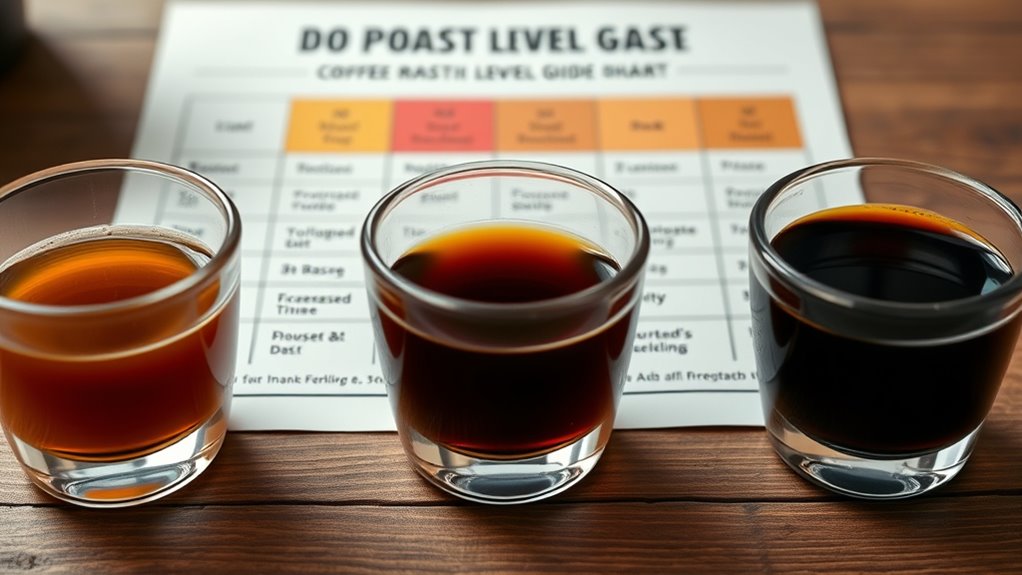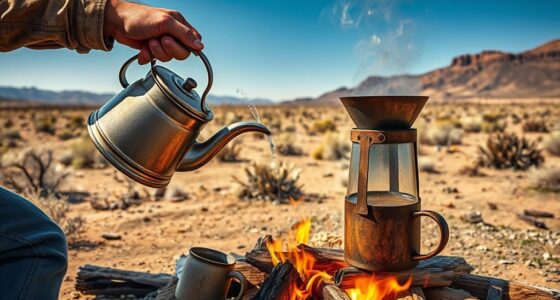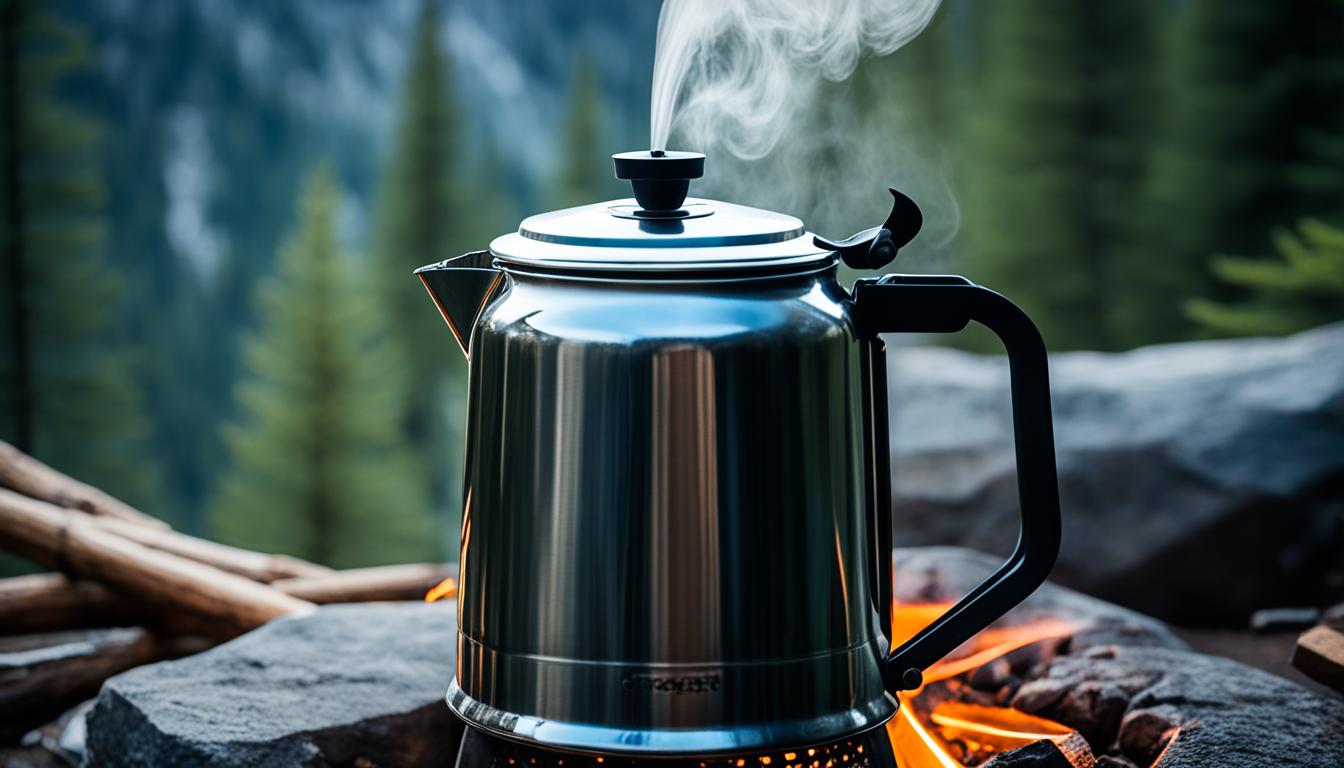When selecting roast levels, do choose based on your flavor preferences and brewing method—light roasts highlight brightness and origin traits, while dark roasts offer bold, smoky flavors. Don’t ignore how roast and brew work together; pairing the right roast with your method enhances taste. Do experiment to find what suits your palate, but avoid over-relying on a single style. If you keep exploring, you’ll uncover even more tips to perfect your coffee experience.
Key Takeaways
- Do match roast levels to your preferred flavor profile and brewing method for optimal results.
- Don’t ignore the origin’s influence; consider how roast level enhances or masks regional characteristics.
- Do experiment with different roast levels to discover which complements your taste preferences.
- Don’t overlook proper storage; keep beans fresh to preserve the intended flavor profile of each roast.
- Do understand that darker roasts have bolder, smoky flavors, while lighter roasts highlight brightness and complexity.
Understanding the Different Roast Levels and Their Flavor Profiles

Understanding the different roast levels is key to finding your perfect coffee flavor. Each roast level affects coffee acidity and highlights different aspects of the bean origin. Light roasts retain more of the bean’s original characteristics, resulting in higher acidity and brighter, fruitier flavors. These beans often come from regions known for their vibrant, nuanced profiles. Medium roasts balance acidity with richer, caramelized notes, offering a well-rounded taste that still reflects the bean’s origin. Dark roasts have lower acidity and bring out bold, smoky flavors, often overshadowing the bean’s original traits. Knowing the origin helps you anticipate flavor profiles, but the roast level ultimately shapes your experience. By understanding these differences, you can better select a roast that matches your preferred taste profile. Additionally, the brewing method you choose can further influence the flavor you experience from each roast.
Tips for Choosing the Right Roast for Your Taste Preferences

Choosing the right roast for your taste starts with identifying what flavor characteristics you enjoy most. If you prefer a brighter, more acidic cup, opt for lighter roasts, which work well with pour-over or AeroPress brewing methods. For a richer, fuller body with chocolatey notes, medium roasts are versatile and suit drip coffee or French press brewing. Dark roasts often deliver bold, smoky flavors, ideal for espresso or moka pot brewing. Additionally, consider your grind size; a coarser grind complements French press and cold brew, while a medium grind suits drip machines. Matching your roast level with your preferred brewing method and grind size guarantees you get the flavor profile you crave, making every cup tailored to your taste. Incorporating proper storage techniques for your coffee beans ensures freshness and preserves the desired flavor characteristics over time.
Frequently Asked Questions
How Does Roast Level Affect Caffeine Content?
You’ll find that darker roasts generally have slightly less caffeine than lighter roasts because caffeine extraction occurs early in the roasting process. However, the difference isn’t huge, so your chosen roast level mainly influences flavor intensity more than caffeine content. As you enjoy your coffee, remember that brewing method and grind size also play a role in caffeine extraction, shaping your overall caffeine experience.
Can I Customize Roast Levels at Home?
You can absolutely customize roast levels at home, turning your coffee beans into a personal symphony of flavor. With home roasting, you become the artist, adjusting time and temperature to craft the perfect roast. It’s like tuning an instrument—it takes practice, but the result is a unique brew that reflects your taste. Embrace the process of roast customization, and you’ll discover a world of coffee tailored just for you.
What Equipment Is Best for Home Roasting?
You should choose a dedicated home roasting setup, like a popcorn maker, stovetop roaster, or a dedicated coffee roaster, depending on your green bean selection and budget. For small batches, a stovetop popcorn popper works well, while air roasters give more control. Always prioritize equipment with good heat distribution and ventilation. This guarantees consistent roasting and fresh flavor, making your home coffee experience enjoyable and efficient.
How Do Roast Levels Impact Coffee Acidity?
You might worry that changing roast levels messes with your coffee flavor, but it actually impacts acidity considerably. Lighter roasts preserve more of the coffee’s natural acidity, giving it a bright, lively taste. As you progress to darker roasts, the acidity diminishes, creating a richer, bolder flavor. Consistent roast levels help you control this acidity, so you get the desired coffee flavor every time and maintain roast consistency.
Are Darker Roasts More Eco-Friendly?
Darker roasts can be more eco-friendly because they often require less energy during roasting due to shorter roasting times, reducing overall environmental impact. However, sustainability considerations also depend on factors like sourcing beans responsibly and minimizing waste. Opting for brands committed to ethical practices and eco-conscious packaging makes darker roasts a better choice for the environment, aligning your coffee habits with sustainable principles.
Conclusion
Now that you know the nuances of each roast level, it’s funny how your favorite brew might just be the one you stumbled upon by chance. Whether you prefer a light, bright cup or a bold, smoky one, trusting your taste buds leads to the perfect choice. Sometimes, it’s the unexpected discovery—like that last-minute decision—to try a different roast that makes your coffee experience truly memorable. Happy brewing!









